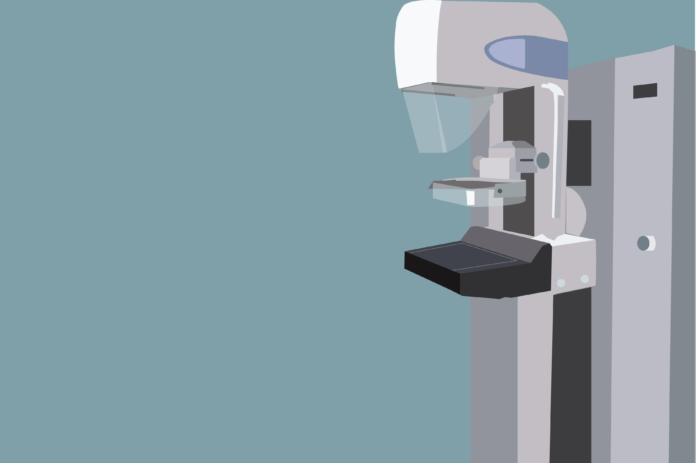UC Davis researchers studied the effects of digital tomography versus mammography
By MONICA MANMADKAR — science@theaggie.org
Research led by UC Davis Health found that over half of women in the U.S. will experience at least one false-positive mammogram across a decade of annual breast cancer screening. The study, published in JAMA Network Open, aimed to estimate the long-term probabilities of women experiencing at least one false positive and a biopsy recommendation over a decade of repeated examinations. A false positive is when a mammogram is determined to be abnormal when there is no cancer in the breast.
“We were primarily interested in whether 3D mammography reduced these probabilities compared to 2D mammography,” said Michael Bissel, an epidemiologist in the UC Davis Department of Public Health Sciences and the first co-author of the study, via email. “We were also interested in whether there were clinically important differences for annual vs biennial (i.e. every other year) mammography screening or differences by a decade of age or breast density.”
He explained that breast density, which measures the composition of fat and fibrous tissue in the breast, influences the probability of being recalled for additional workup — such as further screenings or biopsies — since it is considered an important breast cancer risk factor and impacts the ability to identify cancer on the mammogram itself.
Before beginning the study, researchers were prompted by the importance of screening mammography to decrease breast cancer morbidity. However, false-positive results are common, with 12% of examinations overall being false positives, and up to 60% of women are likely to experience a false-positive result over 10 years. That puts quite a bit of stress on women in terms of anxiety, time and financial commitments, Bissel said.
“It is important for women to understand that false alarms are an expected part of breast cancer screening—and that the advent of 3D mammography has not changed that very much,” said Dr. Anna Tosteson, a professor of oncology and of community and family medicine at The Dartmouth Institute, via email.
The researchers found statistically significant reductions in false-positive results when using a digital breast tomosynthesis compared to digital mammography for women screened annually. A tomosynthesis is an advanced form of mammography, where more detailed and high-resolution images are produced through a lower dose of X-rays.
One key finding of the study was that regardless of whether digital breast tomosynthesis or digital mammography was used, the cumulative probabilities of false-positive results were substantially lower for women who screened every other year versus women screened annually.
The researchers also found that false-positive results were generally lower among women with lower breast density, meaning with less fibrous tissue in the breast. Additionally, Bissel and the researchers found lower false-positive results as the age of the women increased, possibly due to lower breast density as women age and having multiple exams over time with which to compare previous exams.
Bissel said that the frequency of examination had the largest impact on the number of false positives. He suggested that women should have detailed discussions with their healthcare providers to personalize their medical care based on their own individual risk factors.
Looking to the future, the researchers are working on a new paper that will help identify which women are at the highest risk of being recalled for additional workup. This research can help prioritize certain patients to have their mammogram read and have any additional testing done in the same visit, which can reduce anxiety associated with being recalled on a different day.
Written by: Monica Manmadkar — science@theaggie.org




